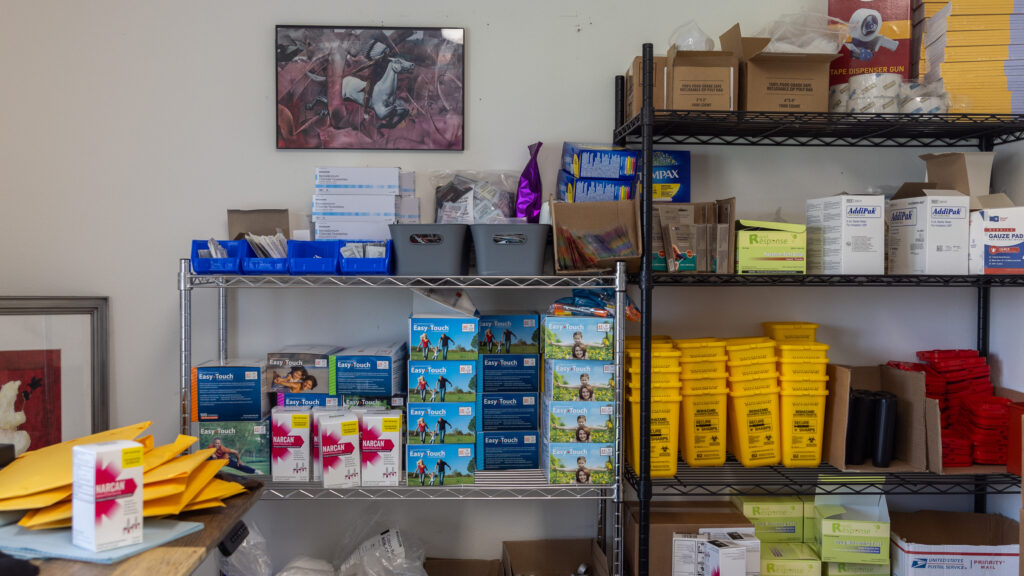Health
NIH launches $270 million anti-overdose campaign for Native Americans

Fatal drug overdoses skyrocketed during the peak of Covid-19 in 2020. And as the dust settled on the pandemic, it quickly became clear that one demographic group had fared far worse than any other: Native Americans.
To combat the drug crisis and its disproportionate impact on Indigenous people, the federal government is now launching an initiative specifically designed to strengthen research into addiction and overdose within Indigenous communities.
But the roughly $270 million project goes a step further than just studying Native American drug deaths. Instead, the National Institutes of Health essentially hands over the reins by offering funding and infrastructure for communities to direct the research themselves.
“Tribes want to lead research, they want to be directly funded to lead research, and they want the research to reflect the priorities of their community,” said Kathy Etz, director of Native American Programs at the National Institute on Drug Abuse. “What we’re doing here is supporting tribes and Native American organizations to do what they want.”
The initiative, known as the National Collective Research Effort to Increase Wellness, or N-CREW, is the largest-ever effort to specifically address drug use and overdoses among Indigenous communities.
It comes amid an ongoing national overdose crisis: About 100,000 Americans died in the 12-month period last reported by the Centers for Disease Control and Prevention. The age-adjusted death rate among Native Americans and Alaska Natives was the highest of all demographic groups: 65.2 deaths per 100,000 people.
The program is administered jointly by NIDA, the National Institute of Neurological Disorders and Stroke, and the National Center for Advancing Translational Sciences. It gets its funding from the HEAL Initiative, a long-term NIH program designed to address the drug crisis and develop non-opioid painkillers.
The multi-phase project will focus on both pain treatment and substance use. The main objectives are twofold: first, to strengthen research capacity within Indigenous communities, and second, to use the data to assist in local public health decision-making.
For many communities, N-CREW comes at the right time. Many had already begun conducting their own assessments of community health needs, and they were calling for more resources to address the ongoing crisis. Native Americans have long suffered disproportionately from alcohol-related illnesses and deaths. Opioids and methamphetamine have become much more prevalent in recent years, adding a new dimension to the multi-faceted epidemic of substance use.
Yet major gaps remain in information about the specific nature and causes of the toll the overdose epidemic is taking among Indigenous populations. One of the biggest problems N-CREW wants to address is what Etz called a “data genocide” – the reality that Native American communities are often effectively “invisible” in large government data sets.
The new research venture will run for seven years, with the first two years spent supporting projects to plan and develop new research and data collection mechanisms. The agency said in a news release that the entire $268 million planned expenditure is “subject to the availability of funds.”
Other branches of the federal government have also worked to strengthen research focused on Indigenous communities and implement ethical safeguards workplace for researchers studying indigenous communities in 2021.
“Tribes across the country are increasingly saying, Hey, our voices are being silenced in this process,” said Ronny Bell, an epidemiologist at the University of North Carolina Eshelman School of Pharmacy. “One of the things we wanted to be able to say in this process is that we’re going to immediately put in place an infrastructure that allows us to hear from the community.”
Specifically, Bell said N-CREW funding and resources are made available to all Native communities, including Alaska Natives and Native Hawaiians. Often, federal programs designed to assist indigenous people are exclusive to federally recognized tribes. Broader participation means tribes like the Lumbee Tribe of North Carolina, of which Bell is an enrolled member, could also participate in the project.
“I think it’s amazing that attention and funds are being directed to the indigenous people who are most at risk and struggling,” said Aurora Conley, co-founder of a harm reduction program serving the Bad River Band of the Lake Superior Tribe of Chippewa Indians. Northern Wisconsin. “I hope to see more efforts than just Narcan distribution as we come together to heal our people and our communities. We are historically strong nations that have survived many atrocities and with support we can help ours holistically.”
But federal health programs that specifically target minority communities are not without pitfalls, especially when it comes to Native Americans. The U.S. government’s long history of war, violent displacement, and broken promises to the tribes it displaced is still visible today—as is its broader legacy of mistreating subjects from marginalized communities, such as in the infamous Tuskegee syphilis study.
But N-CREW hardly shies away from that context, Etz, the NIDA official, said in an interview.
“That context is the foundation of this program: the recognition that communities know what will work for them, that they have knowledge that we couldn’t possibly have,” Etz said. “This program will not succeed if we do not develop trusting relationships and deep partnerships with the communities we work with.”













